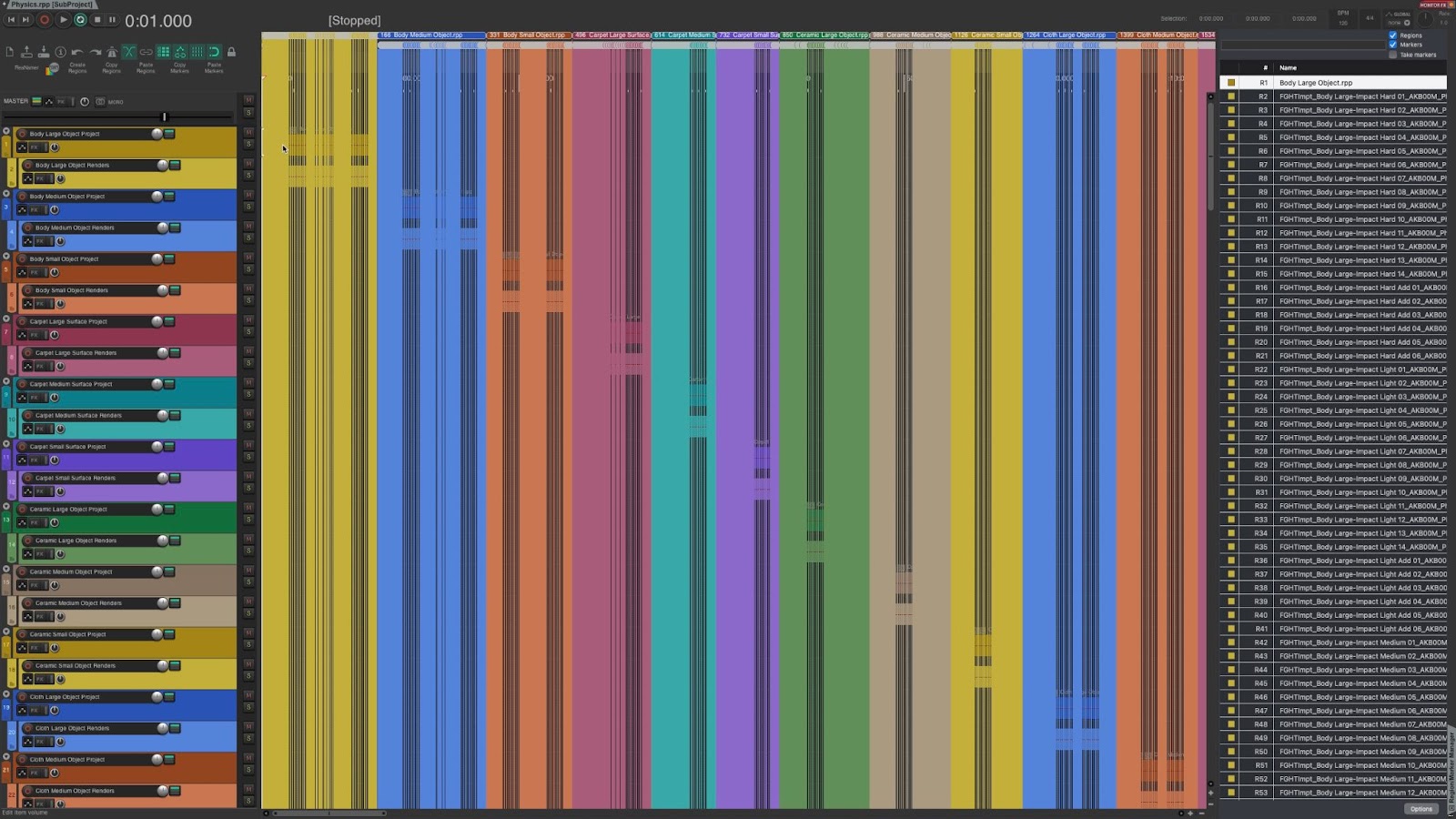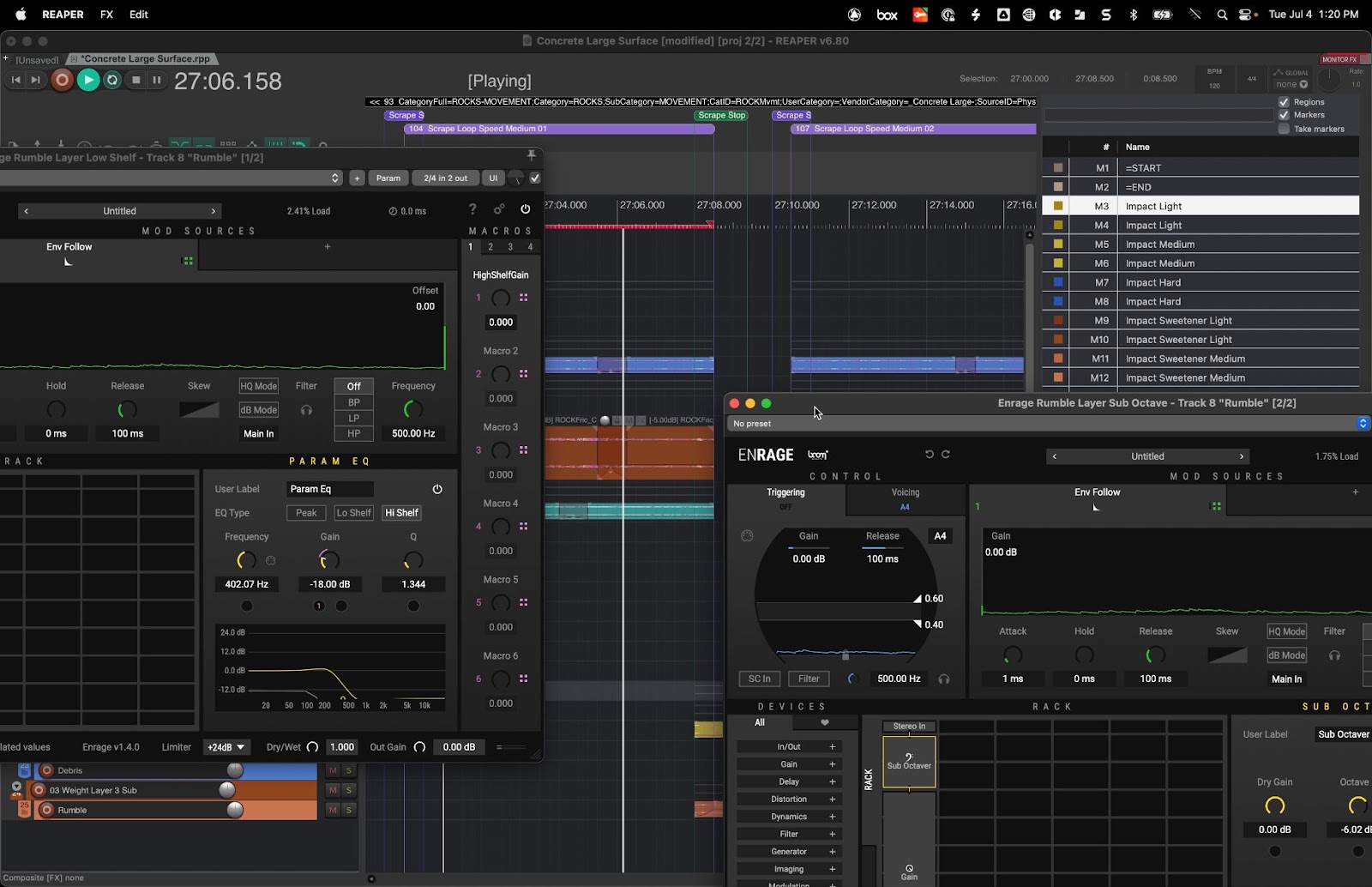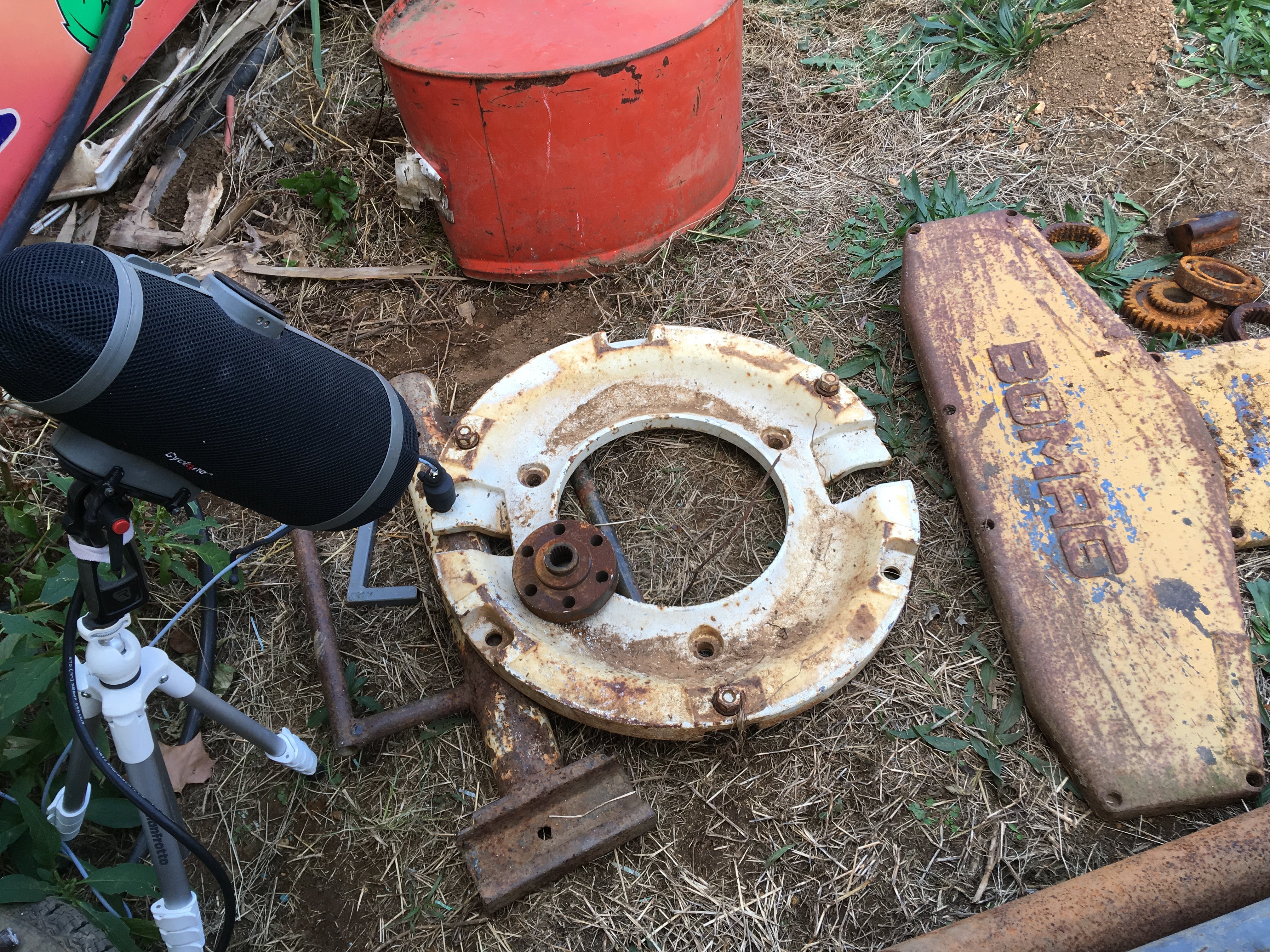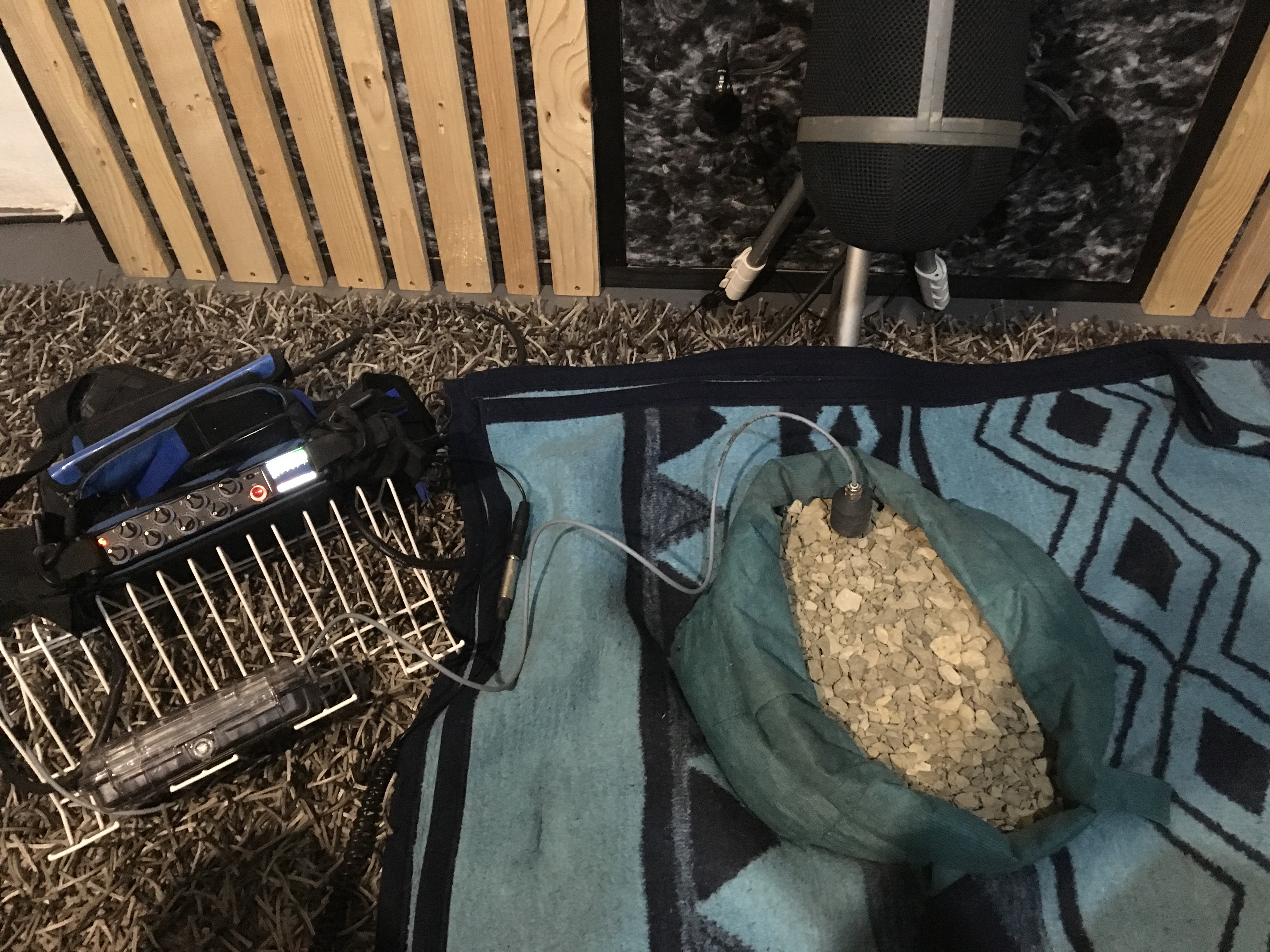Introduction
Audiokinetic recently launched Physics, Strata’s most versatile multitrack SFX collection ever, complete and ready to use on any project. Inside, you’ll find over 50 GB of consistent, quality and adaptable collision sounds to bring your game to life.
This collection was designed specifically for games and includes 12 surface & 11 object types of various sizes, interaction types, speeds and more, to create almost any physics sound imaginable. Total control is at your fingertips, with every sound, its variations, and effect settings used to build the library available for you to edit. The collection has been recorded from the ground up by BOOM Library, impeccably organized for ease-of-use, and is exclusive to Strata subscribers.
We sat down with Simon Pressey, Product Owner of Strata, to dive into Physics, why we created it, who it’s for, and more. Let’s get right into it!
What is Physics?
In game audio terms, Physics refers to the sound that is simulated by collisions, between objects and surfaces in a game engine, that simulates a gravity model for object behavior. For example, a ceramic vase (object) falls onto a concrete floor (surface). The common method for choosing which sounds to play usually involves a Physics matrix, which is based on Surface and Object Type, their size, the force involved in the collision, and the type of collision.
Why a Strata Physics collection?
Back when I was Audio Director (I will not mention names to protect the innocent), a AAA console launch title was close to shipping, and a mechanism to allow the player to gather some helpful loot was introduced to help balance the game. It involved the random placement of destructible ceramic pots, which proliferated throughout the levels. In audio, I did not give this much attention. The vase broke and an appropriate “sword on the vase causing destruction” sound played. I did not anticipate the hundreds of vases turning up throughout the maps and the potential enthusiasm players might have for breaking them and gathering minimal loot. There were plenty of more interesting things to have collisions with! So, of course, every time I watched captures of the game once released, the player was smashing a hundred vases per level and one of 3 variations of large ceramic object destructions played. Next to footsteps, it probably became the most frequently heard sound in the game. I found it hard to listen to.
Come the next production, I vowed to have a more complete, comprehensive physics matrix with a minimum of 11 variations - the magic minimum number to avoid repetition recognition. What ended up happening? We only had the budget to add the new sounds required for the new game and had to make do with what was already available.
Now as Product Owner of Strata, I finally get to fix this issue. With the Physics collection, every game can have a complete, fully customizable, unique, and appropriate set of collision sounds, without spending their entire audio budget. No sound designers will cringe every time a glass or pot or chest breaks, and players will have a more satisfying experience gathering loot.
Who is Physics for?
The Physics collection is for every audio designer building a game with some sort of collision. The quality is AAA and you can use it in any project.
What makes up the comprehensive scope of the Physics collection?
Physics is our most versatile collection ever, with over 50 GB worth of source files in 69 REAPER subprojects, and 10,045 instantly game-ready rendered variation files at your fingertips. The collection contains many of the most common sounds required to populate even the most complex Physics matrices. Here’s a brief breakdown of what you’ll find inside:
- Surface Types (in large, medium, and small variations)
- Carpet
- Concrete
- Concrete Gritty
- Dirt
- Forest
- Grass
- Gravel
- Ice
- Mud
- Rock
- Sand
- Snow
- Water
- Object Types (in large, medium, and small variations)
- Body
- Ceramic
- Cloth
- Glass
- Metal Hollow
- Metal Massive
- Metal Pipe
- Plant
- Rock
- Wood Hollow
- Wood Massive
- Collision Types for all Surface and Object Types and their relative sizes (Whenever applicable. E.g. Dirt does not bend)
- Impacts
- Destruction
- Scrapes
- Bends
- Rolls
- Force for the Impact Collision Types
- Light
- Medium
- Heavy
- Speeds for the Bend, Scrape, Slide, and Roll (Including seamless loops and Starts and Stops)
- Slow
- Medium
- Fast
- Variations
- 14 Impacts (+6 extra “Add” variations per Force)
- 14 Destruction (+6 extra “Add” variations)
- Impact and Destruction Sweeteners: 10 per Force
- Bends, Scrapes, Roll, and Slides (As applicable. 3 variations of the 3 speeds.)
What makes Strata Physics unique?
Every sound in the Physic collection, like every sound in Strata, is created to be rapidly customizable to your needs. It is not a baked library; It is yours to recreate for each and every project.
Most libraries out there are not approached and recorded for the purpose of non-linear media. For example, a traditional SFX library’s metal scrape sounds might be useful, but they probably weren’t recorded with the intention of being used in a game setting, where an audio designer will want to have 10+ variations of the same sound.
With Strata Physics, you get the 2 sides of any type of collision sound - the Object Type (for example, a rock), and the Surface Type (for example, a carpet or a forest floor). In the linear picture you’re watching, the vase is gonna drop on a predetermined surface. With non-linear media, you don’t know where the player is going to drop their vase. It’s not determined until they do it. This is where the value of having both sides of a collision comes in. The combination of sounds in this collection's matrix, of Objects and Surfaces of various sizes, types of collision, and forces, is 828 with 3 to 14 multi-layer variations, each of which is customizable, allowing the desired sound to be created and played, as the gameplay evolves.
What are some common issues with existing Physics sound sets that have been addressed by Strata’s Physics collection?
It can quickly become expensive and time-consuming to record all the source sound you need for just one object or surface, with the quality, consistency, and number of variations needed. We know this because, quite frankly, creating the collection took us longer than the average production cycle of a game and what would have been a good chunk of what would have been said game’s total audio budget.
Every studio I have worked for (including Ubisoft, BioWare-EA, Crytek, and Sony) has a collection of collision sounds that evolved over a long period of time, inherited from many different projects. The quality of the sounds was inconsistent, often had too few or vastly different variations, lacked some surface or object, size or speed, and adding to it was complicated because you had to try and match up with the existing collection of sounds. The task of remaking sounds would inevitably become a lower priority, and I am still hearing, in many AAA projects, collision sounds that were not good in the first project they were used in, re-used in the latest games. Admit it - you’ve all heard that crate break before!
The mining of existing libraries that were not created for non-linear design specifically is very unlikely to yield audio gold. In the non-linear situation, we don’t know exactly when a vase will be thrown; if it’ll hit a sandbank or a wooden door. No commercial linear media collection that I have encountered has the source you need for loops of slides or scrapes at different speeds and sizes on different materials. This is frustrating. Going out and recording the source, and then editing it for just that one scenario, is probably two days minimum worth of work.


If a studio were to create a collection of their own, how long would it take? How much would it cost?
It took us nearly 3 years, from start to finish; from the conception of the project to the final dotting of the i’s and crossing of the t’s. With an audio designer working full-time, recording and editing for 14 months, that’s going to bring you in the range of $100,000 - $200,000. And that doesn’t even include the sourcing of sounds and objects, locations, or the other ancillary work that goes into being ready to successfully record. And then there’s the fact that you’ll need a very experienced audio designer who brings many years’ worth of expertise to the table in order to do it right.


In addition, when we created Strata, we had already done the work of figuring out how to present these recordings as usable sessions. That alone took us over a year of experimenting with different designs and structures. So in terms of total investment, you’re probably looking at something in the range of half of a million dollars.
Practically no individual game would want to spend that much money from their audio budget. So what tends to happen is this: from project to project, you build a physics matrix of particular sounds that you need for your particular game. And then you end up inheriting those sounds through to the next game, adding a few more sounds as you go along, and so on and so forth for many years. But of course, each time you’re adding new sounds, they’re being recorded by different people, using different methods, and the coherency of the matrix starts to disappear. With the Physics collection, we’ve created everything with the idea that it has to match, scale, and be coherent all the way through. You’ll finally have that degree of flexibility and consistency that you need to customize and fit any of your projects.
Conclusion
To summarize, most collision libraries are really not made for game scenarios. Strata Physics is. It has every type of element you need pre-configured, ready to be customized rapidly to your gameplay scenarios; from chaotic destruction to a building block puzzle or the gentle slide of a chess piece, with more than enough variation of every type of collision, from tiny to huge, slow to fast, hard to soft, with bends, slides, and rolls. And it’s exclusive to Strata!
Check out the Physics collection!
Watch our recent Wwise Up On Air, where we were joined by Tristan Horton, Simon Pressey, and Florian Bodenschatz, who went into the inception of the collection & went behind-the-scenes of recording.


Comments
TORLEY x
September 01, 2023 at 05:00 am
I enjoyed learning the WHY and PURPOSE of Strata's Physics very much! Thank you for sharing your sonic storytelling, Simon. I'm curious, how did you arrive at the "minimum of 11 variations"? Was this through intuition, data analysis, some combination thereof?